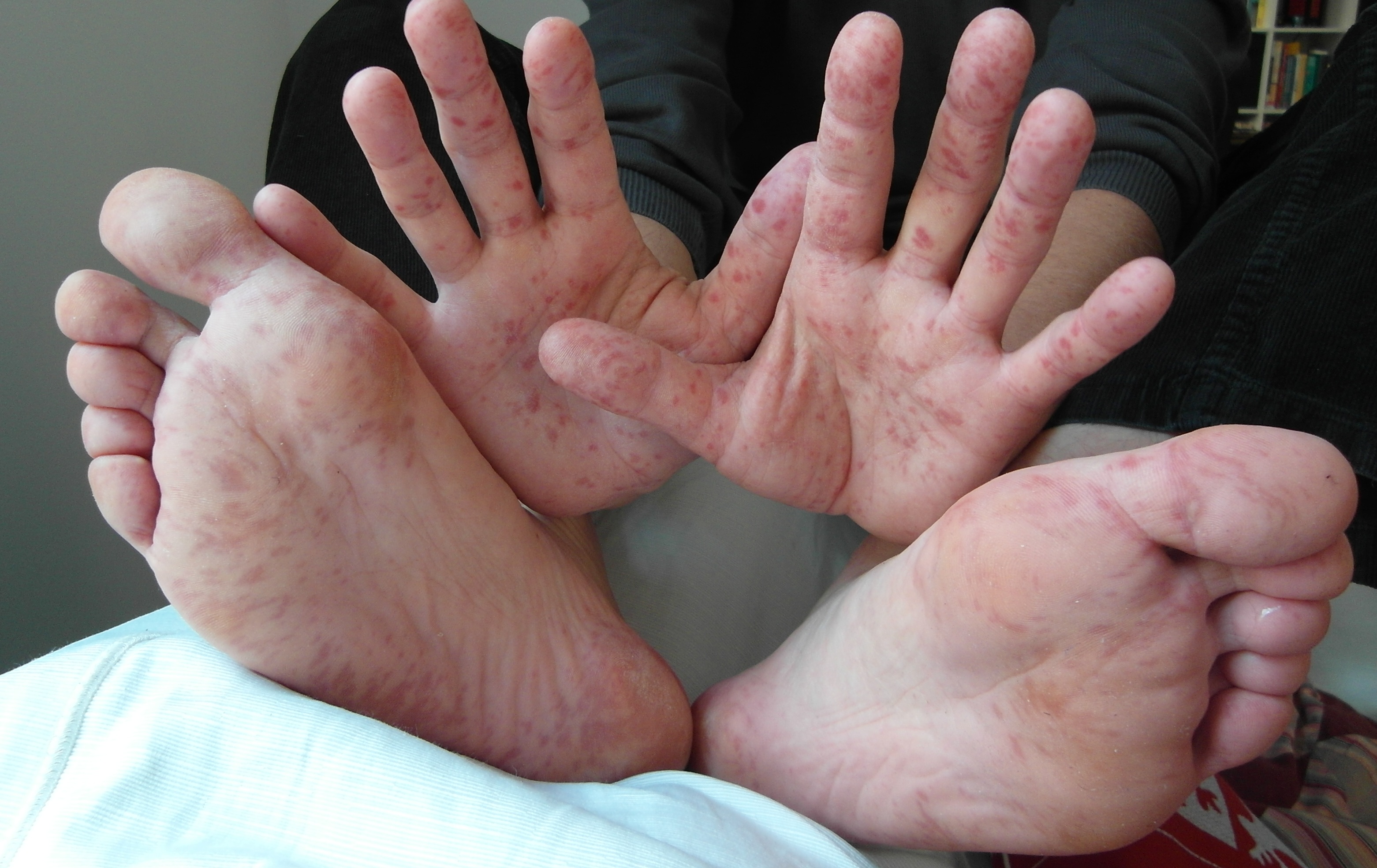Hand foot and mouth disease is a contagious viral infection, affecting young children. It is characterized by a rash on the hands and feet with sores in the mouth. The disease usually affects children, but can occur in adults as well. It is most common in the summer and fall, but it can affect you in other months as well. It is different from other diseases with similar names, such as mad cow disease, foot-and-mouth disease, or hoof-and-mouth disease. Keep reading to learn more about symptoms and causes of this contagious disease.
What Are the Symptoms of Hand Foot and Mouth Disease?
You may notice a variety of symptoms and signs commonly associated with hand foot and mouth disease. You may experience sore throat, fever and have red, painful blisters-like growths on your gums, tongue or cheeks. You may also notice a red rash develop on your palms, soles or even the buttocks. Irritability is another common symptom of hand foot and mouth disease in toddlers and infants.
You don't usually experience symptoms right away, but it takes about 3-6 days for symptoms to  appear. It starts with a fever usually followed by a sore throat and a general feeling of
appear. It starts with a fever usually followed by a sore throat and a general feeling of
discomfort. A rash on your feet and hands will appear within a couple of days of infection.
If your child has developed this infection, you don't have to worry if the symptoms are mild. But you should contact your doctor if the signs are serious or get worse, or if mouth sores keep your child from drinking, eating or sleeping.
Does Hand Foot and Mouth Disease Have Complications?
You need to take things seriously if the symptoms of hand foot and mouth disease become worse after a couple of days. Certain complications may arise:
- Swallowing food will become painful due to sores in the throat and mouth.
- Dehydration is the most common among all the complications. It is, therefore, important to ensure that your child is drinking enough fluid – they may even require intravenous fluids in case dehydration becomes severe.
- A rare yet serious form of the Coxsackie virus may make things worse and involve the brain as well. This may lead to certain complications including viral meningitis, which causes the membranes surrounding the brain to inflame.
- Encephalitis is another complication that involves brain inflammation caused by a viral infection.
What Causes Hand Foot and Mouth Disease?
Generally affecting children under the age 10, hand foot and mouth disease is usually caused by a virus called cozsackie virus A16. It is a contagious disease, which means it can spread from person to person through tiny droplets released when a sick person coughs, sneezes or blow their nose. You will become infected if you touch a contaminated surface and touch your eyes, nose or mouth with the same hand. You will also become infected when you touch the fluid from blisters of a sick person.
How to Get Hand Foot and Mouth Disease Treated
There are a number treatments and home remedies available for the disease. You don't need any specific treatment for the disease because its symptoms usually go away in 7-10 days.
1. Medications
In order to speed up your healing process and soothe your discomforts, your doctor may prescribe an oral anesthetic to relieve the pain of mouth sores. You can also take OTC pain relievers such as ibuprofen or acetaminophen for pain relief.
2. Home Remedies
Since you have blisters in your mouth and throat, it is important to ensure that the things you eat don't irritate those blisters. Try the following tips to make your pain more manageable.
- Suck on ice chips or ice pops.
- Eat ice cream or enjoy sherbet.
- Go for cold beverages, such as ice water.
- Don't eat acidic food and beverages, such as fruit drinks, citrus fruits and soda.
- Don't eat spicy and salty foods.
- Eat food that requires less chewing.
- Rinse your mouth with warm water after you eat anything.
- In case your child can rinse mouth without swallowing, you may consider using saline water for swishing. Your child will feel better by doing the same several times a day.
3. Prevention Methods
As there isn't any specific treatment option available for hand foot and mouth disease, it is better to take steps to avoid becoming infected in the first place.
- Wash your hands frequently and ensure that your child does the same. Use soaps when available or use germ-killing gels.
- Be sure to clean high-traffic surfaces more often. Use soap and water for cleaning and also use a diluted solution of chlorine bleach with water for perfect cleaning. Don't forget to clean your baby's pacifiers often.
- It is important to stay away from people who are affected by hand foot and mouth disease. You should do the same when your child is infected – keep them out of school or childcare until fever and sores are gone.
